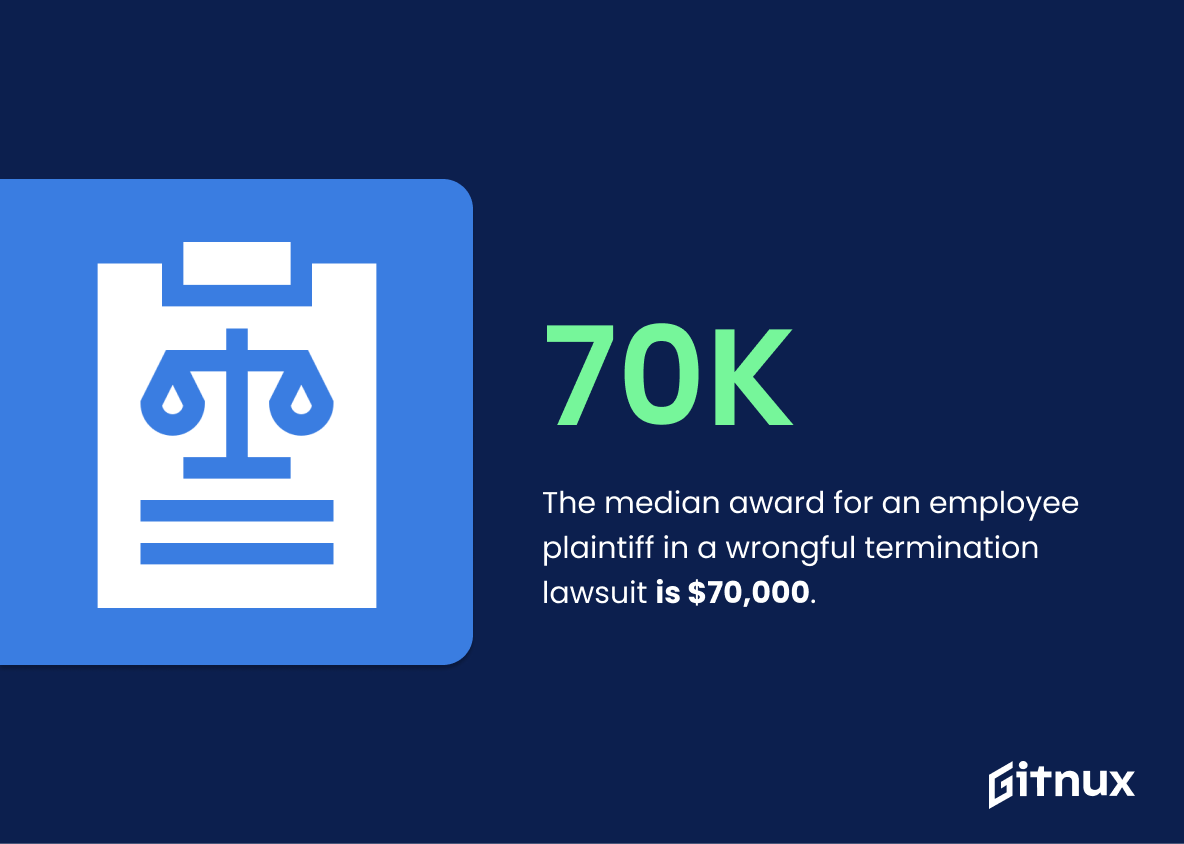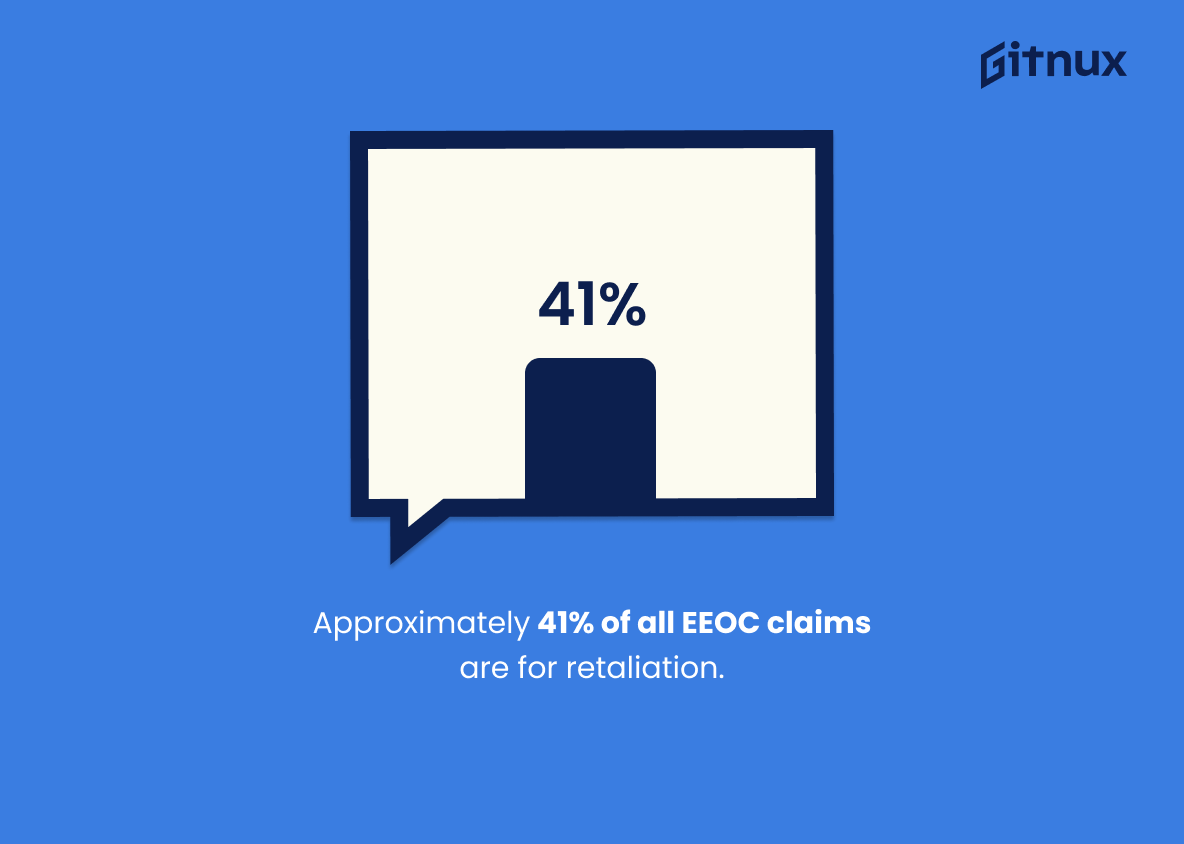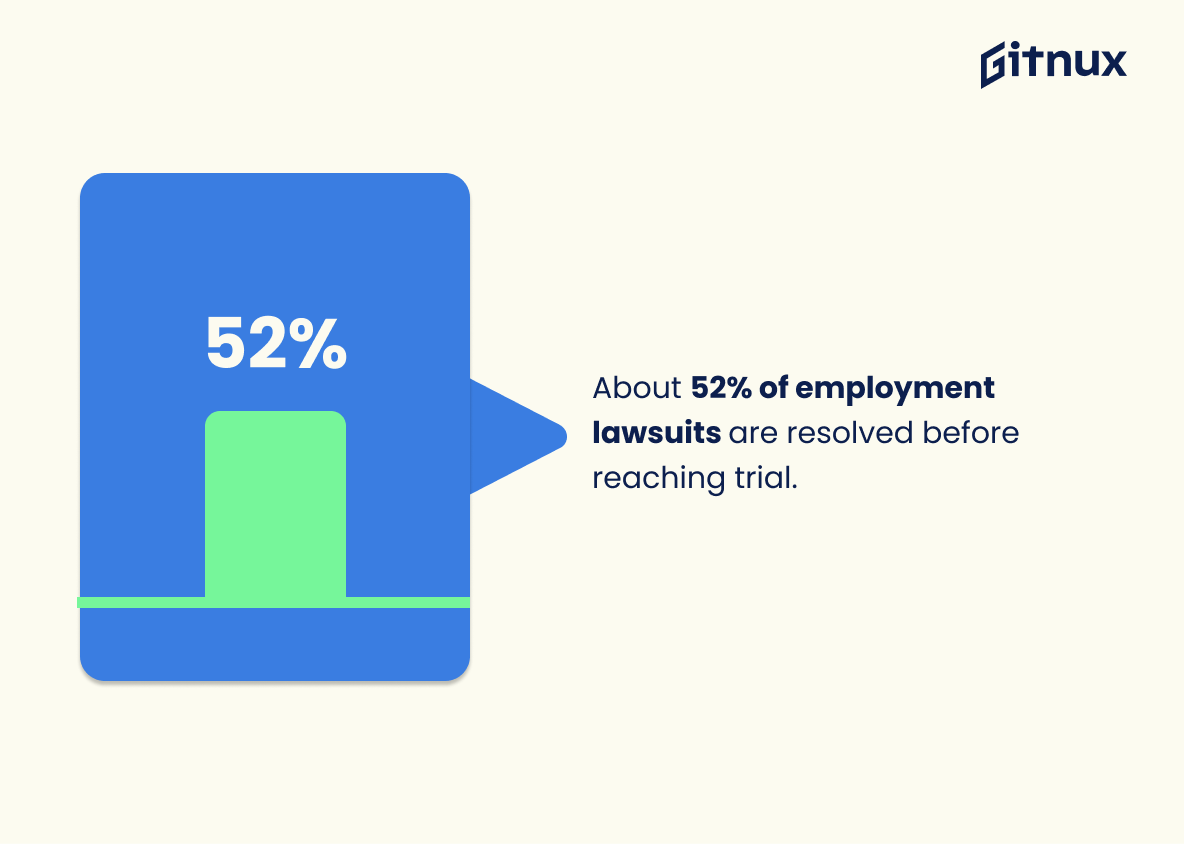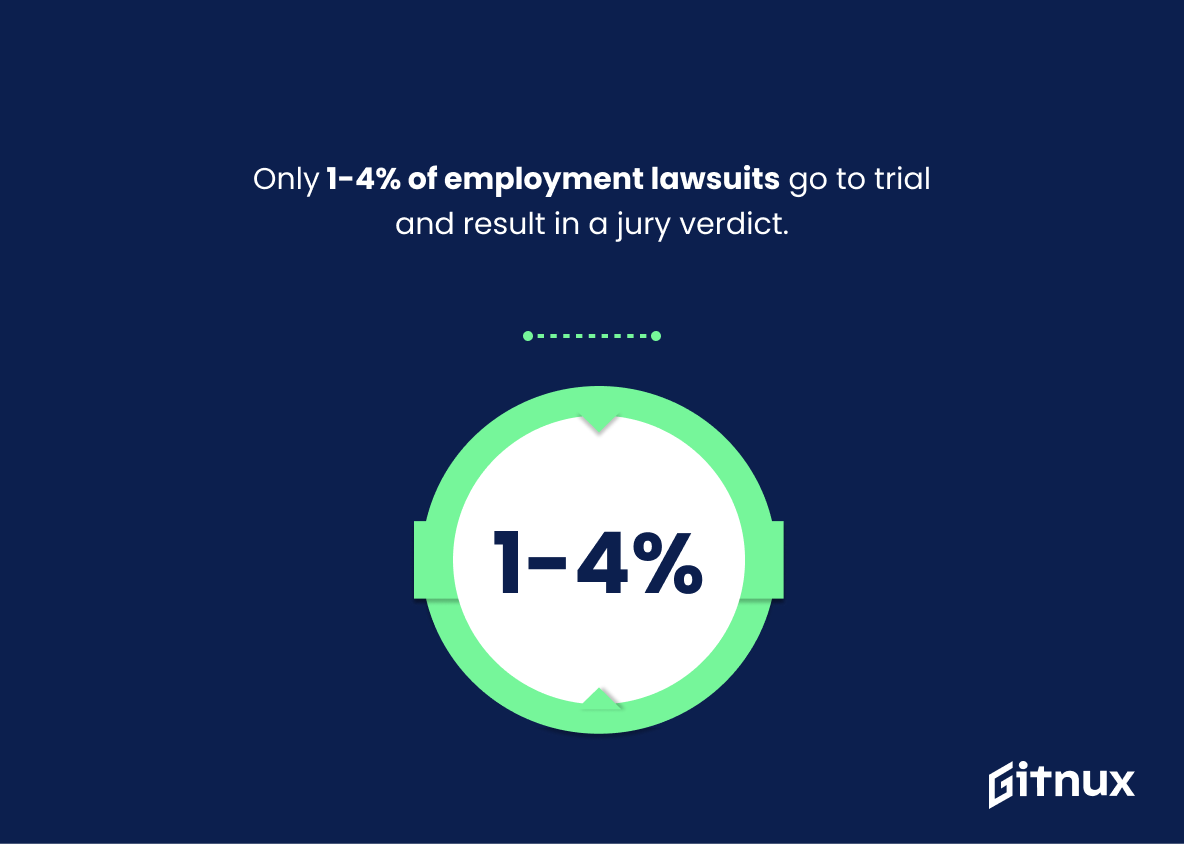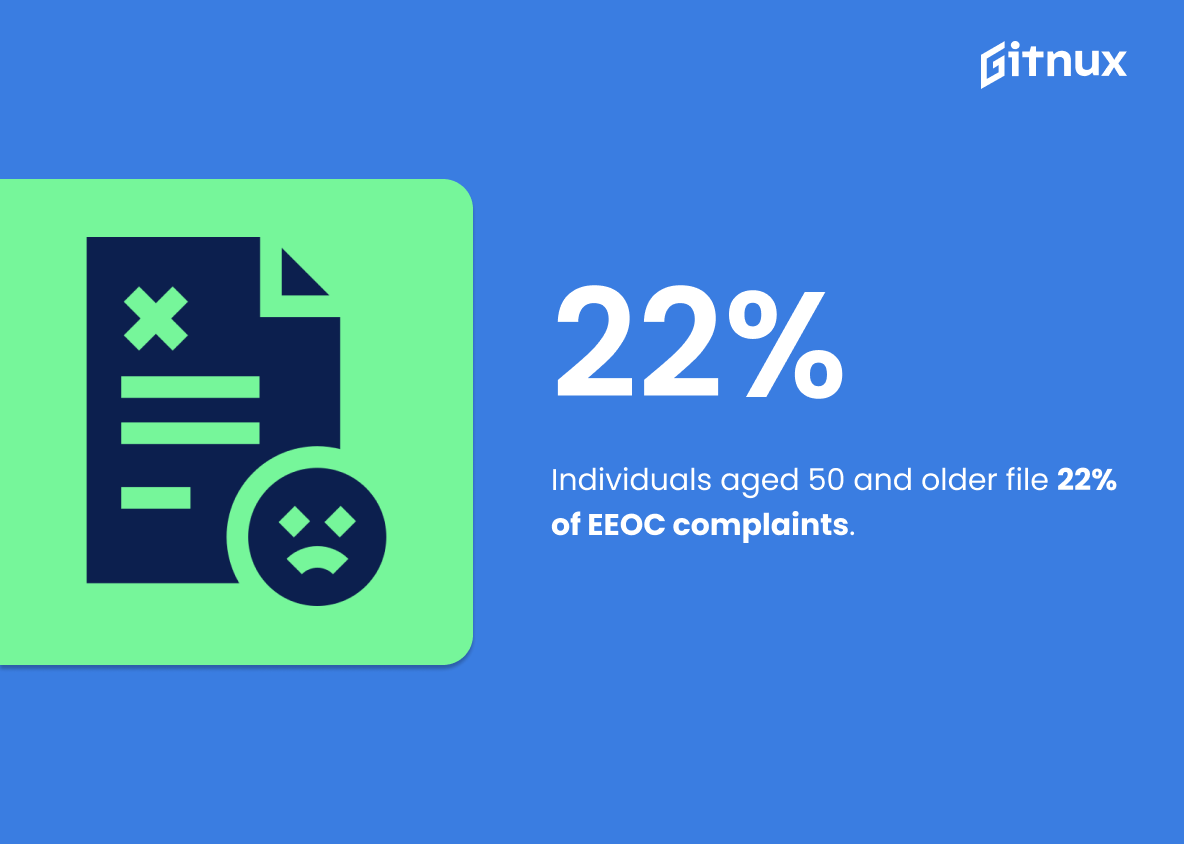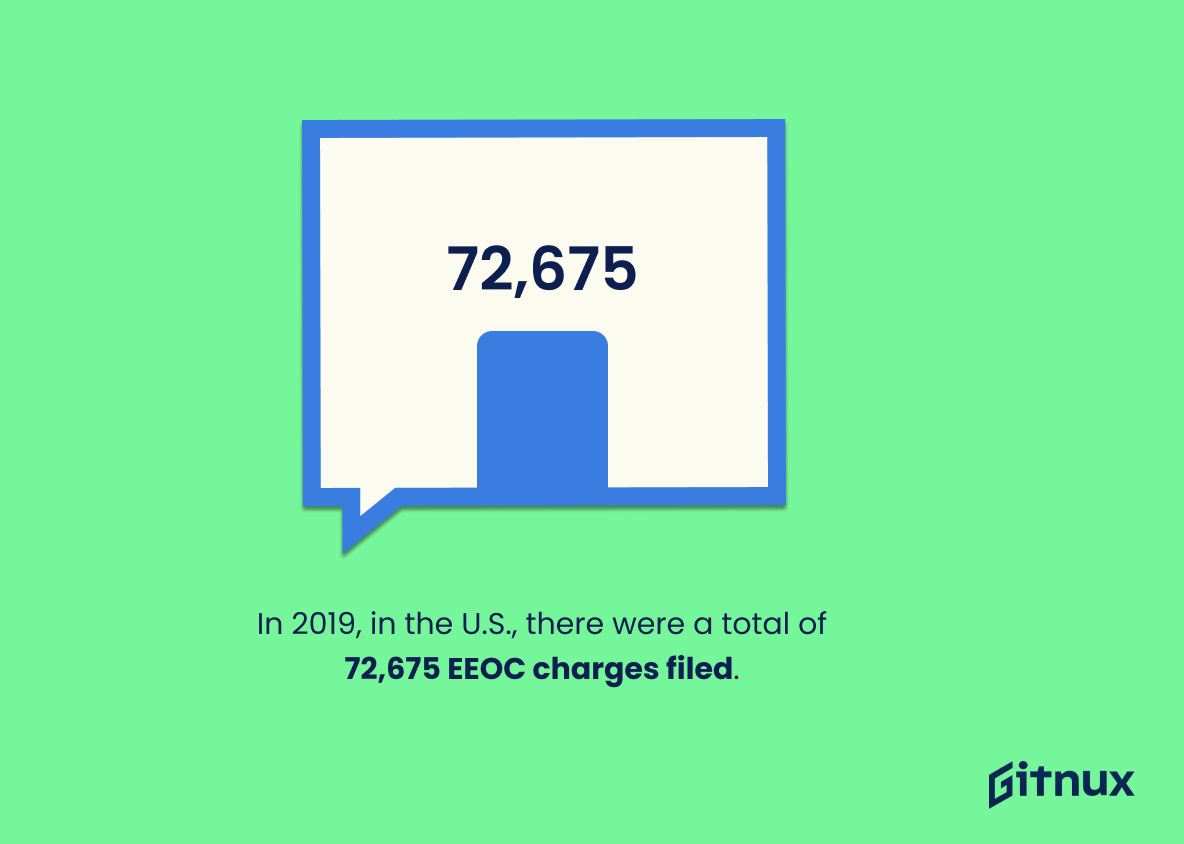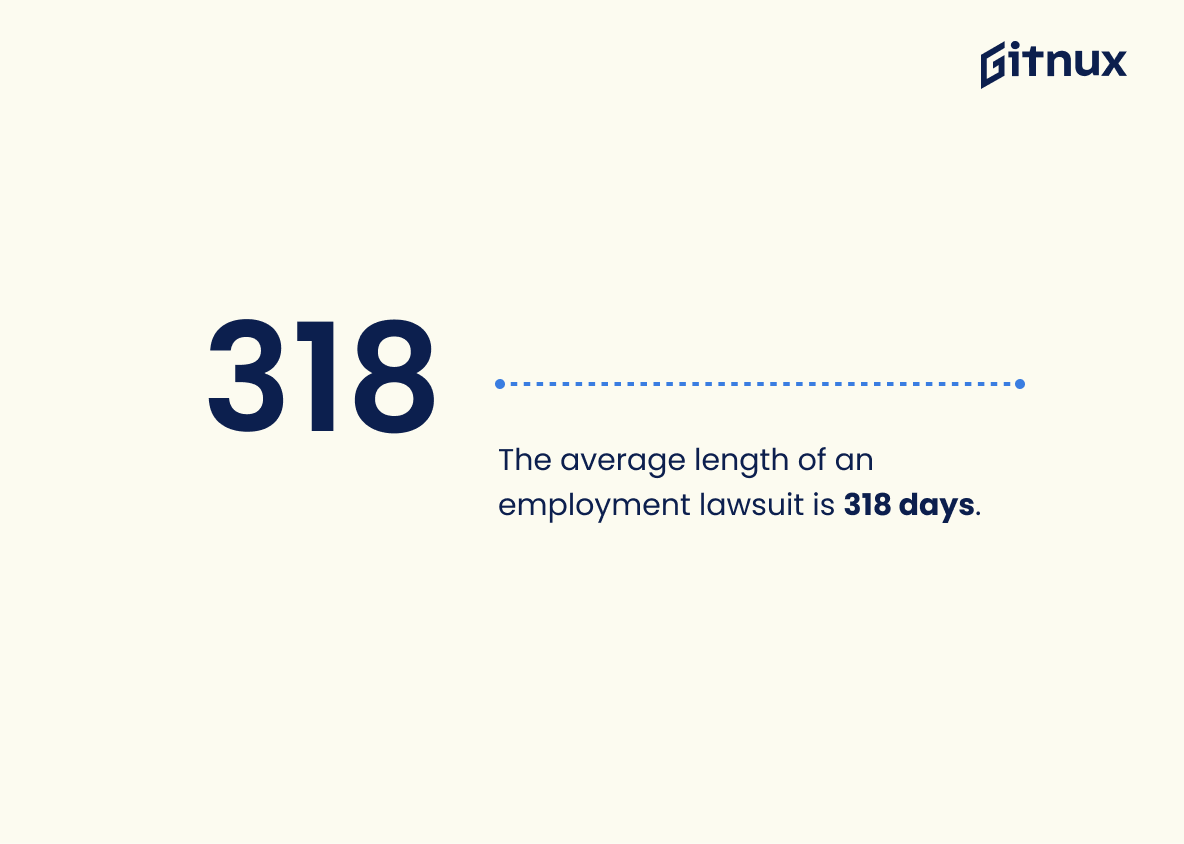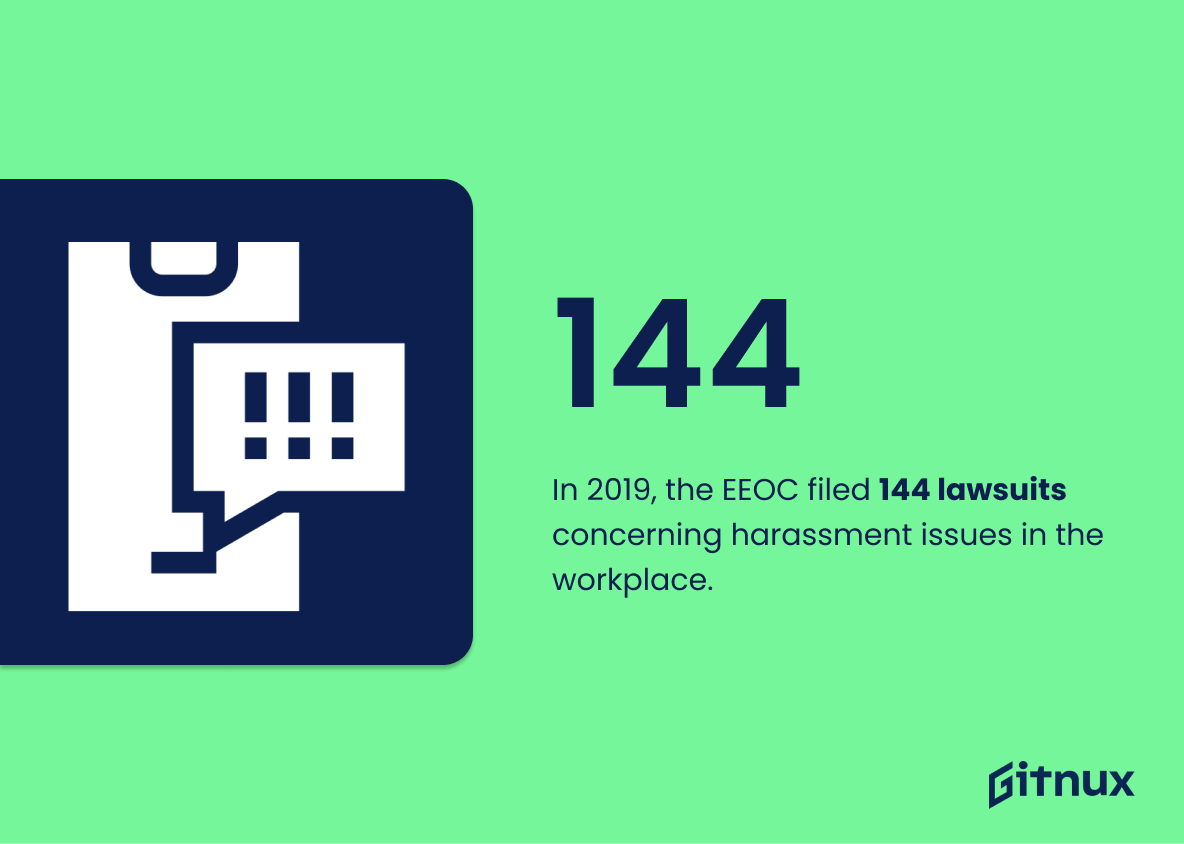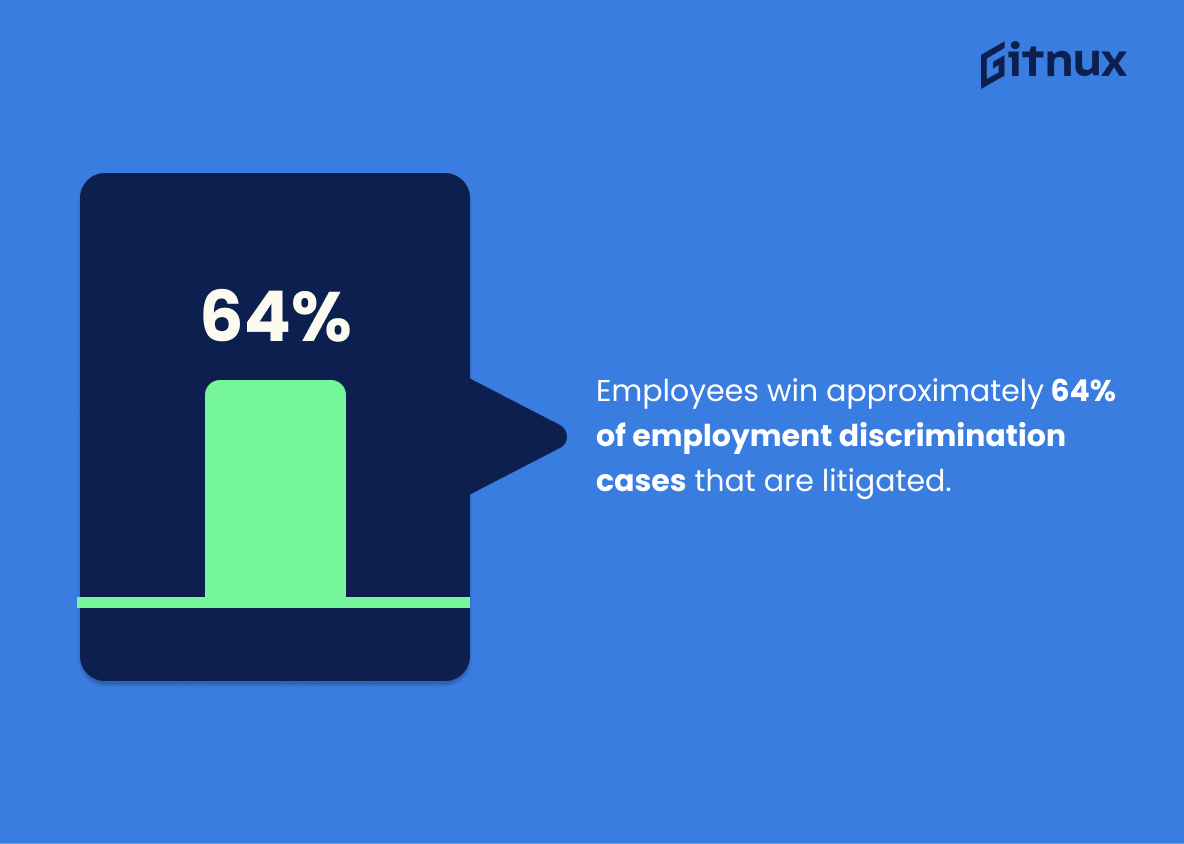Employee lawsuits are a serious issue for businesses of all sizes. From wrongful termination to discrimination and harassment, the statistics show that employers face an increasing risk of legal action from their employees. In this blog post, we will explore 20 key employee lawsuit statistics that provide insight into the prevalence and cost of these cases in today’s business environment.
Employee Lawsuit Statistics Overview
The median award for an employee plaintiff in a wrongful termination lawsuit is $70,000.
This statistic is a powerful indicator of the potential financial impact of wrongful termination lawsuits. It serves as a reminder that employees who have been wrongfully terminated may be entitled to significant compensation, and that employers should take all necessary steps to ensure that their termination practices are compliant with the law.
Approximately 41% of all EEOC claims are for retaliation.
This statistic is a stark reminder of the prevalence of retaliation in the workplace. It highlights the need for employers to be aware of the potential for retaliation and to take steps to prevent it. It also serves as a warning to employees that they should be aware of their rights and take action if they feel they have been retaliated against.
In 2020, the total monetary value of all EEOC claims reached over $106 million.
This statistic is a stark reminder of the importance of adhering to employee laws. It demonstrates the sheer magnitude of financial losses incurred by companies due to employee lawsuits, and serves as a warning to employers to take the necessary steps to ensure compliance with employee laws.
About 52% of employment lawsuits are resolved before reaching trial.
This statistic is a crucial piece of information when it comes to Employee Lawsuit Statistics, as it provides insight into the likelihood of a lawsuit being resolved without the need for a trial. Knowing that the majority of employment lawsuits are resolved before reaching trial can help employers and employees alike to better understand the potential outcomes of a lawsuit and plan accordingly.
Only 1-4% of employment lawsuits go to trial and result in a jury verdict.
This statistic is a crucial piece of information when it comes to Employee Lawsuit Statistics, as it highlights the rarity of cases actually going to trial and resulting in a jury verdict. It serves as a reminder that the majority of employment lawsuits are settled out of court, and that the chances of a case going to trial and resulting in a jury verdict are slim.
Individuals aged 50 and older file 22% of EEOC complaints.
This statistic is a powerful reminder that age discrimination is still a major issue in the workplace. It highlights the fact that older workers are disproportionately affected by workplace discrimination and are more likely to take legal action to protect their rights. This statistic is an important reminder that employers must be aware of the potential for age discrimination and take steps to ensure that all employees are treated fairly and equally.
In 2019, in the U.S., there were a total of 72,675 EEOC charges filed.
This statistic is a powerful indicator of the prevalence of employee lawsuits in the United States. It shows that in 2019, a significant number of individuals felt the need to file a charge with the Equal Employment Opportunity Commission, suggesting that workplace discrimination and other issues are still a major problem. This statistic is an important reminder that employers must remain vigilant in their efforts to ensure a safe and equitable workplace for all.
The average length of an employment lawsuit is 318 days.
This statistic is a telling indication of the amount of time and resources that can be expended in an employment lawsuit. It serves as a reminder to employers that they should take proactive steps to ensure that their workplace is compliant with the law and that they are treating their employees fairly. It also serves as a warning to employees that they should be aware of their rights and be prepared to take legal action if necessary.
California has the highest percentage (12%) of EEOC charges filed in the U.S.
This statistic is a stark reminder of the prevalence of employee lawsuits in California. It highlights the need for employers in the state to be aware of their legal obligations and to take proactive steps to ensure compliance with employee laws. It also serves as a warning to employers in other states that they should not become complacent in their own compliance efforts.
Sexual harassment lawsuits make up about 20% of all workplace discrimination lawsuits.
This statistic is a stark reminder of the prevalence of sexual harassment in the workplace. It highlights the need for employers to take proactive steps to ensure that their employees are safe and respected in the workplace. It also serves as a warning to those who may be considering engaging in such behavior, as the consequences can be severe.
In 2019, the EEOC filed 144 lawsuits concerning harassment issues in the workplace.
This statistic is a stark reminder of the prevalence of harassment issues in the workplace, and serves as a call to action for employers to take a proactive stance in preventing such issues from occurring. It highlights the importance of creating a safe and respectful work environment for all employees, and the potential consequences of failing to do so.
Approximately 84% of employment discrimination cases are resolved through voluntary measures.
This statistic is a powerful indicator of the effectiveness of voluntary measures in resolving employment discrimination cases. It shows that the majority of cases are able to be settled without the need for a lawsuit, which can be a lengthy and costly process. This statistic is important to consider when discussing employee lawsuit statistics, as it provides insight into the efficacy of alternative dispute resolution methods.
Companies lose 67% of lawsuits brought against them by employees when they reach trial.
This statistic is a stark reminder of the importance of taking employee lawsuits seriously. It highlights the fact that companies who do not take the necessary steps to protect themselves from employee lawsuits are likely to face significant losses if the case goes to trial. This statistic serves as a warning to employers to ensure they are taking the necessary steps to protect themselves from employee lawsuits, as the consequences of not doing so can be severe.
Employees win approximately 64% of employment discrimination cases that are litigated.
This statistic is a powerful indicator of the prevalence of employment discrimination in the workplace. It shows that the majority of cases brought to court are successful, suggesting that the issue is widespread and that employees are often able to prove their claims. This statistic is an important reminder that employers must take steps to ensure that their workplace is free from discrimination and that employees are treated fairly.
Conclusion
Employee lawsuits are a serious issue for businesses of all sizes. The statistics show that 10% of new businesses face legal threats or lawsuits from former employees, and 60-70% of all U.S. lawsuits are employment related. On average, it costs an organization $160,000 to defend against a single employee lawsuit with the median award for plaintiffs being around $70,000 in wrongful termination cases alone. Additionally, approximately 41% of EEOC claims involve retaliation while 52% of employment suits are resolved before reaching trial and only 1-4% go to jury verdicts resulting in awards for the plaintiff’s side 64 percent of the time when litigated. California has seen 12 percent more EEOC charges than any other state with individuals aged 50+ filing 22%, sexual harassment making up 20%, and whistleblower cases increasing by 12%. It is clear that employers must take proactive steps to protect their business from costly litigation due to employee disputes as well as ensure compliance with relevant laws governing workplace behavior such as those enforced by the Equal Employment Opportunity Commission (EEOC).
References
0. – https://www.work.chron.com
1. – https://www.businessmanagementdaily.com
2. – https://www.eeocdata.org
3. – https://www.ziprecruiter.com
4. – https://www.aarp.org
5. – https://www.eeoc.gov
6. – https://www.abajournal.com
7. – https://www.smallbizgenius.net
8. – https://www.employment.findlaw.com
9. – https://www.shrm.org
ZipDo, cited June 2023: Employee Lawsuit Statistics
